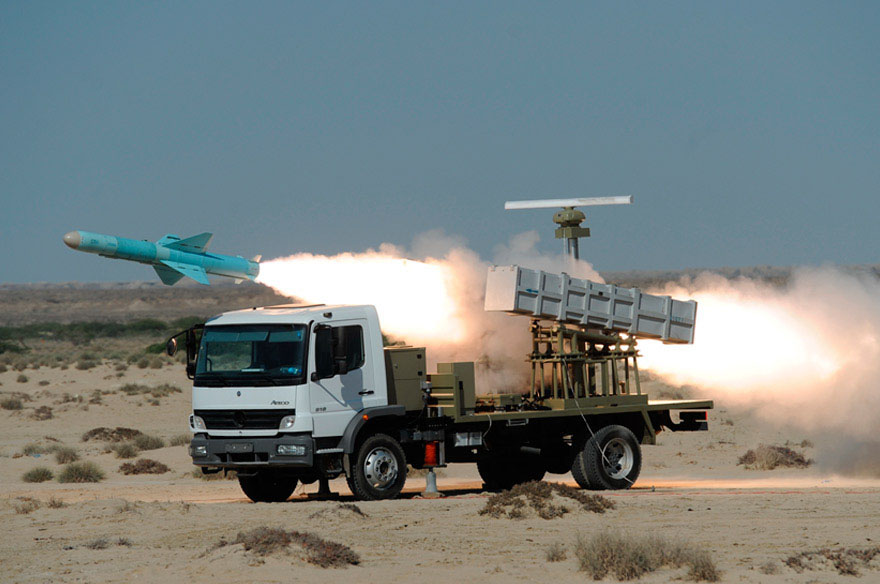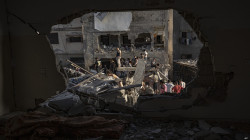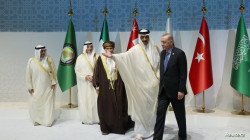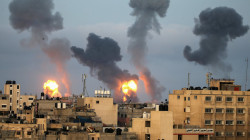Analysis: The nature of attacks by factions against Israel and the weapons used

Shafaq News/ The Washington Institute reviewed the challenges and options facing Iraqi Shia factions aligned with the "Axis of Resistance" regarding their declared attacks against Israel, after two months of suspending their attacks against US forces in Iraq and Syria.
The report indicated that attention was focused on the anti-coalition strikes carried out by Iraqi "militias", supported by Iran, in Iraq, Syria, and Jordan, while these groups also carried out parallel campaigns against Israel since the outbreak of the Gaza war in October 2023.
However, they considered that "IRI's (Islamic Resistance in Iraq) Israel strikes have been a highly distinctive subset in Militia Spotlight's attack tracker from the beginning."
40 attacks
According to estimates by the Institute, groups affiliated with "IRI" claimed responsibility for 40 attacks on Israel since the first of its kind on November 2, 2023, targeting an unspecified location "in the Dead Sea". The report further mentioned that on the same day, an Iranian-made "Quds" cruise missile was filmed in the Jordanian desert after it crashed or was intercepted.
It added that the latest attacks, specifically on April 1, involved the apparent launch of a cruise missile from Iraq towards a naval base in Eilat where Israeli nuclear-armed submarines are maintained.
Targets and weapons
The specific aim points have frequently been poorly defined, described with phrases such as "military target,” "critical target," or "intelligence target," the report noted, adding that these "claims" involve sixteen locations, with the only recurring ones being Eilat (9 attacks), Golan (7), Haifa (6), and Ben Gurion Airport (2).
Additionally, during March, IRI claimed responsibility for attacks on a large number of targets, including 7 small airports and at least military airbases inside Israel.
Language used to describe the weapon systems was also noted by the Institute, saying that it was more ambiguous than the language used in strikes in Iraq and Syria, where phrases such as "appropriate weapons" were used in about a quarter of the responsibility statements regarding attacks on Israel.
The report also stated that in about three-quarters of the attacks on Israel, unspecified model drones were used, but "Shahed 101" attack drones appeared in footage, indicating a mix of nighttime and daytime launch operations that could not definitively be linked to declared strikes.
The Institute included a table in the report showing fluctuation in the number of attacks but also indicated that the overall number was generally increasing, adding that in the latter half of February after US deterrent strikes in Iraq, it seemed that most of the resistance factions had halted their attacks, but they resumed in March, albeit only against Israel.
Eilat attack
Continued, the Institute stated that the attack on Eilat on April 1 appeared to have been carried out from central or southern Iraq, with the possibility that another "Quds" cruise missile from the series, which had been repeatedly observed being launched from central Iraq in recent months, was used.
"The IRI used the "suitable weapons" phrasing for this strike. The weapon likely approached Israel on a lesser-known route, perhaps along the Iraq-Saudi border and across southern Jordan, approaching Eilat from the east." The Institute explained that the target was believed to be a facility belonging to the Israeli Navy where ships dock and submarines are maintained.
It clarified that mutual messages on social media platforms indicated that the "Harakat Hezbollah al-Nujaba" faction claimed responsibility for the Eilat attack and similar attacks. It also noted that a Telegram account named "Brothers of Jihad," affiliated with the Hezbollah Brigades usually publishes advance or exclusive information about such attacks.
"Interestingly, Sabereen News, which is increasingly under the influence of the militia Kataib Hezbollah, stopped posting about the attacks after KH secretary-general Abu Hussein al-Hamidawi announced the suspension of "resistance" attacks in late January."
Kataib Sayyid al-Shuhada
The report stated that the Harakat Hezbollah al-Nujaba and the "Kataib Sayyid al-Shuhada (KSS)," designated by the United States as terrorist organizations, are the main or sole members of the Islamic Resistance in Iraq who have been launching drones at Israel since February, confirming the extent of KSS' commitment to cross-border resistance activities rather than enhancing its local authority inside Iraq, and its strong connection to the Iranian Revolutionary Guard, which provided it with long-range strike weapon systems.
Lastly, the report mentioned that the leader of KSS, Abu Ala al-Walai, issued a statement on January 24 announcing the start of the second phase of Iraqi muqawama (Resistance) operations in solidarity with the Gaza war, "indicating that these operations would focus on targeting Israeli ports and other strategic facilities."





